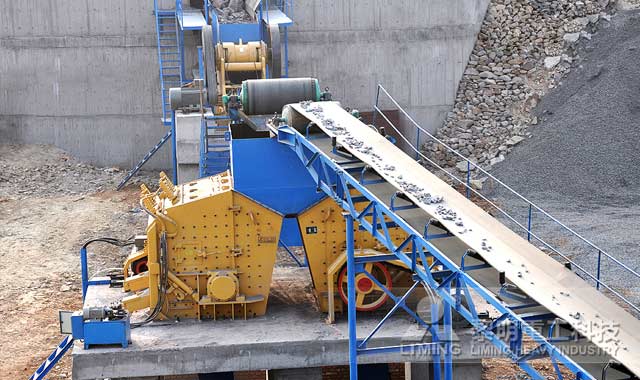A rock crushing line typically consists of several stages aimed at breaking down large rocks into smaller, more manageable sizes for various purposes such as construction, road building, or landscaping. Each stage plays a crucial role in the overall process, ensuring efficient and effective crushing of the raw material. Let’s explore the various stages involved in a typical rock crushing line:

- Primary Crushing: This is the initial stage where large rocks are fed into the crusher. The primary crusher, often a jaw crusher or a gyratory crusher, breaks the rocks into smaller pieces. Jaw crushers use compressive force to crush the material between two surfaces, whereas gyratory crushers operate by rotating the material to break it.
- Secondary Crushing: After primary crushing, the smaller pieces of rock are further reduced in size through secondary crushing. Secondary crushers, such as cone crushers or impact crushers, process the material to even finer sizes. Cone crushers operate by squeezing the material between an eccentrically rotating mantle and a concave bowl, while impact crushers use the principle of impact to crush the material against a hard surface.
- Tertiary Crushing: In some cases, especially for finer aggregates or specific end products, a tertiary crushing stage may be incorporated. Tertiary crushers, like vertical shaft impactors (VSI) or cone crushers, refine the crushed material to achieve the desired particle size and shape. VSI crushers use the principle of centrifugal force to throw the rocks against a hard surface, resulting in finer crushing.
- Quaternary Crushing (optional): In certain applications where very fine materials are required, a quaternary crushing stage may be included. Quaternary crushers further reduce the material size, often producing sand or finer aggregates. These crushers are typically used in specialized applications where precise control over particle size distribution is necessary.
- Screening: Throughout the crushing process, screening equipment is used to separate the crushed material into different sizes or grades. Vibrating screens or trommel screens are commonly employed for this purpose. Screening ensures that the final product meets the required specifications by removing oversize or undersize particles.
- Washing (optional): In some cases, particularly for materials like sand and gravel, washing may be necessary to remove impurities and achieve the desired cleanliness and quality. Washing equipment, such as sand screws or cyclones, helps to remove clay, silt, and other contaminants from the crushed material.
- Stockpiling and Storage: Once the crushing and screening process is complete, the crushed material is often stockpiled for storage or further processing. Stockpiles allow for efficient management of inventory and ensure a steady supply of material for downstream operations.
Each stage in the rock crushing line is critical for achieving the desired end product quality, size, and shape. Proper selection and optimization of equipment, along with careful consideration of the material properties and production requirements, are essential for the success of the crushing operation.
